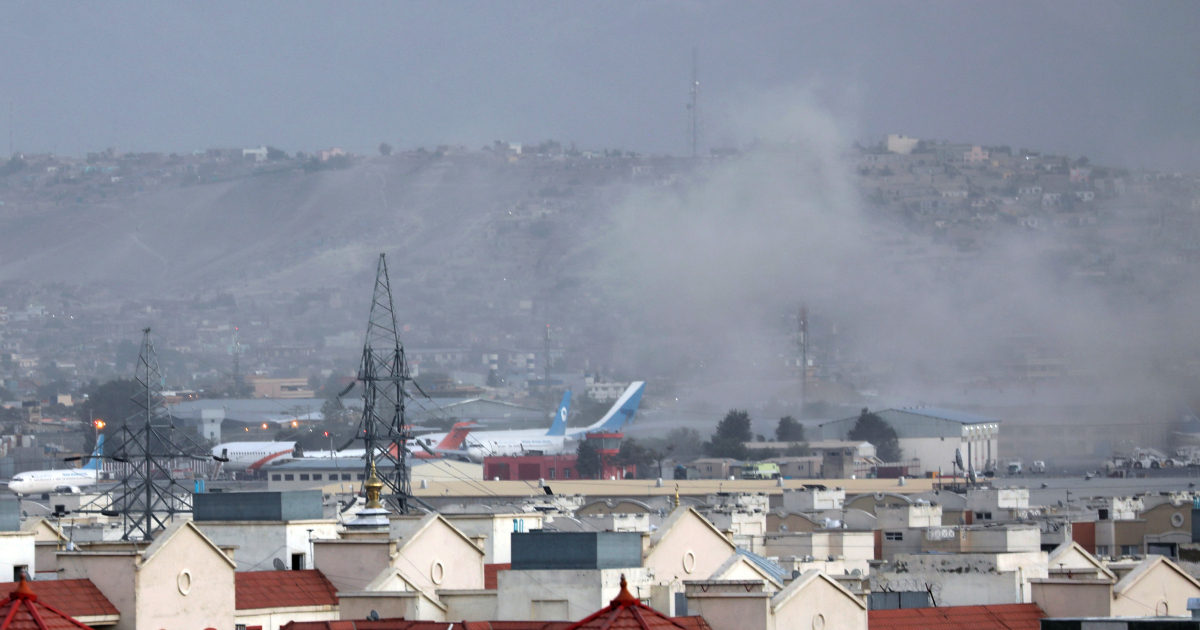On August 26, two suicide bombers killed 72 Afghans and 13 members of the US military at Kabul airport amid evacuation efforts. The Islamic State in Khorasan Province (ISKP), the Afghanistan affiliate of ISIL (ISIS), claimed responsibility for the brutal attack and thus put itself in the international media spotlight.
Although foreign media started paying attention to this group only now, ISKP has been terrorising Afghans since 2015 and it will continue to do so after the August 31 withdrawal of US troops.
There are two aspects of this attack that need to be considered. First, ISKP attacked the airport primarily to discredit its rival, the Taliban, in yet another escalation of the larger conflict between Sunni extremist armed groups. Second, ISKP made it clear that the Taliban will find it hard to keep its promises to ensure the safety and security of civilians, especially women and minorities under its rule.
A conflict between Sunni non-state actors
The emergence of ISIL, the umbrella organisation that includes ISKP, has often been attributed to sectarian dynamics and Sunni-Shia conflicts from the Arab world to Afghanistan and Pakistan.
The problem with blaming violent conflict in this region on tensions between the two sects is that it ignores how the armed group has had a long, bloody legacy of stoking intra-Sunni conflict.
ISIL was formed by defectors from al-Qaeda in 2014 in Syria who then attacked their parent organisation and its Syrian affiliate, Jabhat al-Nusra. ISKP was formed primarily by defectors from the Taliban in both Afghanistan and Pakistan in 2015, who then went on to attack the Afghan branch. In both cases, the defectors considered their former organisations not extreme enough or not committed enough to attack fellow Sunnis, who they considered deviants, or Shia Muslims.
Essentially the conflict between ISIL and its affiliates on one hand, and al-Qaeda and the Taliban on the other, represents an oft-ignored intra-Sunni conflict among extremist groups. Both Syria and Afghanistan are zones of insecurity that have allowed the formation of multiple extremist non-state actors, essentially religious warlords. Since these non-state actors are so close ideologically, their legitimacy is threatened as long as the other rival exists, and thus must be eliminated immediately. Defeating their violent competitors delivers the benefits of monopolising the jihadist narrative as well as gaining new recruits.
This is the conflict ISKP is gearing up for with the Taliban, as the US withdraws. While ISKP numbers have dwindled to 2,000, it can still challenge the legitimacy of the estimated 60,000-strong Taliban. With its forces spread thin across Afghanistan, the Taliban would be particularly vulnerable to violent terror tactics by its splinter.
Anti-Shiaism and the security challenge
The roots of the Taliban in both Afghanistan and Pakistan can be traced to the austere Deobandi school, a South Asian Islamist revivalist movement. In the 1980s, the Sipah-e-Sahaba organisation formed in Pakistan, breaking away from the main Deobandi movement, to focus primarily on an anti-Shia platform. Another group known as Lashkar-e-Jhangvi split from this group in the 1990s, claiming its parent group had deviated from the original anti-Shia platform. Defectors from this group would later join IKSP, attracted by its more brutal anti-Shia campaign.
The brunt of the violence by these groups has been borne by the Hazara, a Shia ethnic minority group, living in Afghanistan and Pakistan. The community has been historically victimised by different Afghan rulers, most famously by Abdurrahman Khan who sought to completely eradicate it in the 1890s.
A century later this community endured violence by the Taliban as it sought to establish its rule over Afghanistan. In 1998, the armed group massacred thousands of Hazaras in Mazar-i-Sharif in retribution for the killing of its fighters following a failed attempt to capture the city the year before.
After ISKP emerged, the Hazara community became one of its main targets. Some of its most brazen attacks include a May 2020 massacre at a maternity hospital in a majority Shia Muslim district of Kabul, killing more than 20 people, including newborn babies and mothers. A year later, in May 2021, it launched an attack at a school in the same district, killing at least 90 people, most of them schoolgirls.
Calling this a “sectarian conflict” would be inaccurate because that would suggest equality between the two sides. It would also obfuscate the racism that along with anti-Shia sentiment drives the attacks on the community, which has long been wrongly considered “non-indigenous” to Afghanistan by other ethnic groups.
This is also reflected in the fact that the US-backed Afghan government never prioritised the safety of the Hazara and in fact, some of its members were known to discriminate against the community.
The Taliban leaders have repeatedly said the rights of minorities and women will be protected. However, whether the leaders can keep their own fighters under control and discipline them when they break their orders remains to be seen.
What is certain is that the Taliban will find it extremely difficult to rein in ISKP and eliminate its appeal among more extreme elements of the Afghan society and its own ranks.
As for the US, the bloody attack on August 26 will compel the Biden administration to retaliate, which would ultimately complicate the plans for a full military withdrawal and potentially even harm relations with the Taliban itself.
The views expressed in this article are the author’s own and do not necessarily reflect Al Jazeera’s editorial stance.
